By: Terhi Maunumäki, Sandra Miettinen, Elisa Sorajoki and Mona Lundén
The purpose of our research is to investigate how different cities in Finland use English on their websites when they give instructions on coronavirus. We chose websites of four cities from different parts of Finland. The cities which are included in the research are Rovaniemi, Vaasa, Tampere and Helsinki. The main focus in this research is to find out how these cities use English when giving instructions on coronavirus and if the English versions differ from the Finnish ones. We are also interested in finding out if there are any other languages used on the website in this context besides English and Finnish.
Rovaniemi
The website of the city of Rovaniemi provides information on coronavirus situation both in Finnish and in English. Even detailed instructions on how coronavirus affects the locals are given in the two languages. Some of this information is provided also in Arabic and Persian: there are two links on the site which open into separate files. To get information in other languages, for example in Swedish or in Spanish, the website guides the visitor to InfoFinland.fi where information concerning the coronavirus situation generally in Finland can be found. Therefore, in order to access more detailed information on the website concerning the virus situation in the city of Rovaniemi, the visitor has to be able to understand either Finnish or English.
The overall view of the website is similar in both languages. The link to the English version is titled “International” and it is placed in the upper left-hand corner of the Finnish website (see Figure 1). The fact that the link is not titled with the usual option, “In English”, is interesting, and it points to the self-evident status of English’ as Lingua Franca. English being the only language providing all the information in addition to Finnish proves also that English has a more central role compared to other languages on this website. However, the title “International” can be misleading for the visitor, because it may lead them to believe that information in multiple languages is provided behind the link.

Figure 1. The link to the English version.
In both Finnish and English versions there are visible links to coronavirus instructions and they can be found easily on the main page. These pages give instructions to the visitor on how to seek medical care in Rovaniemi health centers and also recommendations on how one can protect themselves and others from getting an infection. Both pages provide more or less the same information: phone numbers and office hours of the health centres and lists of instructions. On top of both pages there is also a short introduction to coronavirus, when it was classified as pandemic by World Health Organization and when the state of emergency was declared in Finland. In addition, the English page also provides a short clarification about how the state of emergency will affect the Finnish health care services, and it specifically points out that the main focus is on cases which require urgent treatment. Besides that, below the instructions on how to act in case of a possible infection there is a subtitle “Call the health centre to make an appointment only in an urgent case”, which does not occur on the Finnish version. The Finnish version mentions this only once on the page, below the instructions on contacting the emergency care with a text “älä ole yhteydessä päivystykseen muissa kuin kiireellistä hoitoa vaativissa asioissa” (‘do not contact the emergency care in other than in cases that require urgent care’). In addition, The Finnish version gives the customer the option to use an electronic system to book an appointment at the health center (see Figure 2), to assess symptoms or to ask questions (see Figure 3). On the English page these options are not presented, even though Omaolo.fi and Koronabotti provide services also in English.

Figure 2. Chat box tool on the Finnish page.

Figure 3. Instructions on using omaolo.fi and koronabotti on the Finnish page.
As mentioned above , both of the pages offer similar information on how to protect oneself and others from the coronavirus infection. The pages also provide lists of instructions regarding different topics, and in some cases it is apparent that the instructions have been translated word for word from Finnish to English. For example, the English page informs that “The health centre operates a call-back system if they are too busy to answer your call” and the equivalent information on the Finnish page is “Ajanvarauksessa on käytössä takaisinsoittojärjestelmä, jos puheluun ei pystytä vastaamaan”. Therefore, the exact same information about these issues can be found both on the Finnish and the English page (see figures 4 and 5).
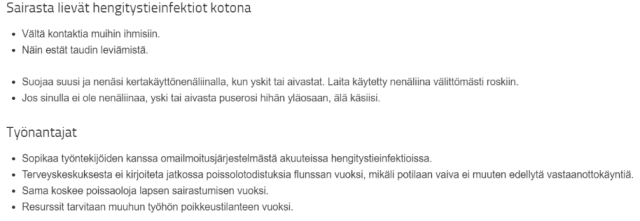
Figure 4. Finnish instructions.
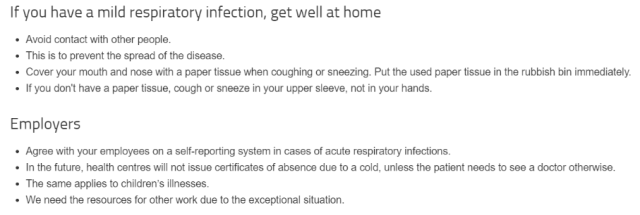
Figure 5. English instructions.
However, there are some differences between the two pages. No symptoms of coronavirus are listed on the English version, whereas the Finnish page describes the symptoms: “Oireita voivat olla kuume, yskä, hengenahdistus, lihaskivut, väsymys, nuha, pahoinvointi tai ripuli. Joskus oireena voi olla myös haju- tai makuaistin puutos.” (‘The symptoms can be fever, cough, shortness of breath, muscle pain, tiredness, cold, nausea or diarrhea. Sometimes symptoms can include lack of smell and taste, too.’) On another Finnish page there is even a picture describing the possible symptoms (see Figure 6). It is hard to say why there are no mentions of the symptoms on the English version. It might be that the administrator assumes that the visitor will find this information in English from elsewhere, for example with the help of the links which the website provides.

Figure 6. Picture of the symptoms on the Finnish page.
Even though the instructions are more or less the same, some differences can also be found between the Finnish and English instructions on how people can protect themselves and others from getting an infection. The Finnish page highlights the importance of good hand and respiratory hygiene and provides a link to the Finnish Institute for Health and Welfare (THL) in case the visitor wants to get more information. In addition to the instructions which are the same on the Finnish page, the English version gives a more detailed list of instructions given by WHO which include for example safe food practices and request to share travel history when seeking medical care. The Finnish page does not mention avoidance of undercooked or raw animal products or anything about sharing travel history with the health care providers. The English page gives also some other instructions which are not mentioned on the Finnish version, such as “wash your hands after handling animals or animal waste” and “avoid spitting in public”.
Overall, the website of the city of Rovaniemi offers a large amount of information about coronavirus both in Finnish and in English. English clearly has a central role on the website, because, besides Finnish, it is the only language used in informing the visitors about coronavirus. The website offers links to external sources which provide information in other languages, and only a little information is given in Arabic and Persian. The website offers mainly the same information both in Finnish and English. The biggest differences between the pages are that Finnish page offers more options to make appointments and seek information on the coronavirus, and that the English page provides a few instructions that are not mentioned on the Finnish version. The English page is designed well and it is similar to the Finnish page to a great extent. The information on the both pages is reliable and comprehensible. The administrator seems to have made an effort on constructing the English version of the page, because there is plenty of information available instead of just including external links.
Vaasa
The website of the city of Vaasa includes information on the coronavirus and instructions in Finnish, Swedish and English. In addition, the website also includes pages in Albanian, Arabic, Chinese, Estonian, French, Kinyarwanda, Persian, Russian, Somali, Swahili, and Vietnam. The information about all these languages is prominent on the page and easy to find. The link to pages in other languages than Finnish, Swedish and English is placed in the top left corner of the page, so it is clearly visible.
The Finnish and English page include almost all the same information. They both include the following topics: “Prevent infection”, “Stay home if you have a runny or stuffy nose”, “Call your healthcare provider if you have serious symptoms”, “Treatment of coronavirus infections” and “Monitor coronavirus updates” as well as a list of updates from different departments. The one topic, that is included on the English page, but not the Finnish page is the topic “Information on educational activity is given through Wilma”. All the information included on both pages is also available as an audible message.
Something that is included on the Finnish page, but not the English page are two pop-up windows (Figure 7). The other pop-up window appears in the bottom right corner of the page and it includes the text “Kysy koronaviruksesta 24/7” (‘Ask about the corona virus 24/7’). When clicking open the pop-up window, a directory from the Finnish medical society Duodecim opens where you can type in a search word or a question. The other pop-up window is called “Korona-info” (‘Corona info’) and it appears in the bottom left corner of the page. When clicking open that pop-up window, a chat bot appears. You can ask questions from the chat bot, too, and the answers it generates are from information found on the webpage of the Finnish Institute for Health and Welfare (THL). In the chat bot window, there are also some hyperlinks in Finnish with information about the disease, the situation of the virus in Finland and the world, frequently asked questions and the national information phone. Neither of these pop-up windows can be found on the English nor the Swedish page.
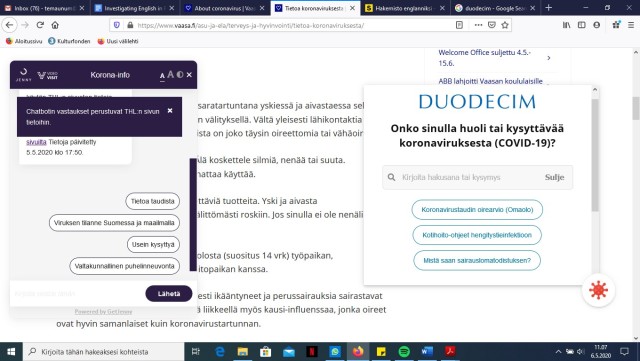
Figure 7. Pop-up windows on the Finnish page.
There are also some differences in the information on the two sites provided under the topic Call your healthcare provider if you have serious symptoms. The information in the first and last paragraphs as well as the phone numbers of the health centres are the same on both pages. However, in addition to these, the Finnish page (Figure 8) has a hyperlink to the Health Station Services page and one paragraph with information about emergency care for patients with other respiratory symptoms; this information is not included on the English page (Figure 9).
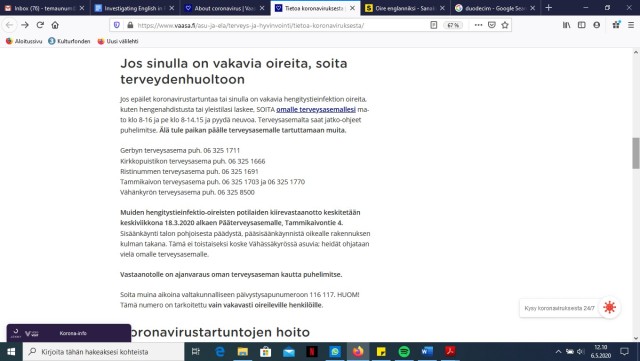
Figure 8. Information on the Finnish page.
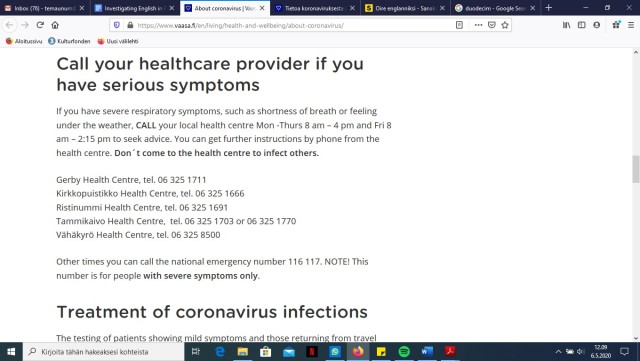
Figure 9. Information on the English page.
Besides these differences the Finnish page and the English page contain the same information. From the texts included on both pages, it is apparent that the Finnish page has been translated into English word for word, and therefore they contain the same information. The information provided on both pages is comprehensive, reliable and understandable. At the end of both the Finnish page and the English page there is a list of useful hyperlinks for more information about the virus that lead to the website of Vaasa Hospital district, the Finnish Ministry of Foreign Affairs as well as the website and twitter of the Finnish Institute for Health and Welfare (THL) (Figure 10).
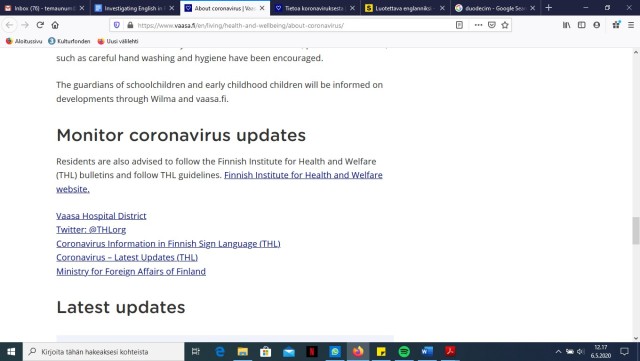
Figure 10. Links on the English page.
Tampere
When it comes to the website of the City of Tampere, they provide information on coronavirus in different languages. The main language is Finnish, but an extensive amount of information is also provided in English. Besides these languages, they also offer information in Arabian, Chinese, Estonian, French, Persian, Russian, Somalian, Swedish, Thai and Vietnamese. Taking into account people who are not competent in English, they have placed hyperlinks to the information pages in different languages in the beginning of the page.
When comparing the City of Tampere’s coronavirus web pages that are in Finnish and in English, an interesting point is that right in the beginning the English version offers an information box on how everyone can make sure to reduce the risk for the spread of coronavirus. This is something that the Finnish page does not tell the readers at all. Under the English information box one can find the steps to follow if people are suspecting a coronavirus infection. On the Finnish page, this is the title that is placed right in the beginning. Both the Finnish and English web pages have the same instructions on how to manage if one is suspecting a coronavirus infection. Additionally, they provide information on what to take into account if the coronavirus case is confirmed. The English version includes hyperlinks to the Finnish Institute for Health and Welfare (THL) pages. The first one describes the coronavirus instructions on different languages and the second one the latest news in relation to the virus. This does not appear in the Finnish page.
Both the Finnish and English web pages provide information on the impact of the epidemic on services, although Finnish page includes more of it. It has different subpages for each title, including 1) public places: libraries, culture services, occasions and events, 2) sport places and youth services, 3) day care, schools and institutions, 4) services for elderly people, 5) social and health services for children, youth and families 6) mental health care and welfare for drug abusers, 7) health services, 8) social services for adults (food care) and services for immigrants, 9) travelling and international guests, 10) environment health and food supervision (cleaning, restaurants) and 11) enterprises and communities. The English version does not include as wide a range of information, but offers instead a number of pdf files on 1) the impact of coronavirus on the services offered by the city of Tampere, 2) changes in the immigrant services in the city of Tampere, 3) impact on home care services, 4) school health care services and 5) bulletin for Tampere city student health care. On the whole, the information on the impact of the epidemic provided in the subpages in Finnish is much more extensive than the information in the pdf files in English (see the examples 1 and 2). For example, the first pdf file includes the same information condensed in one page that the Finnish version spreads out on several subpages. In addition to the information on the subpages in Finnish, there are hyperlinks to the actual announcements due to the title of the subpage (see Figure 11).
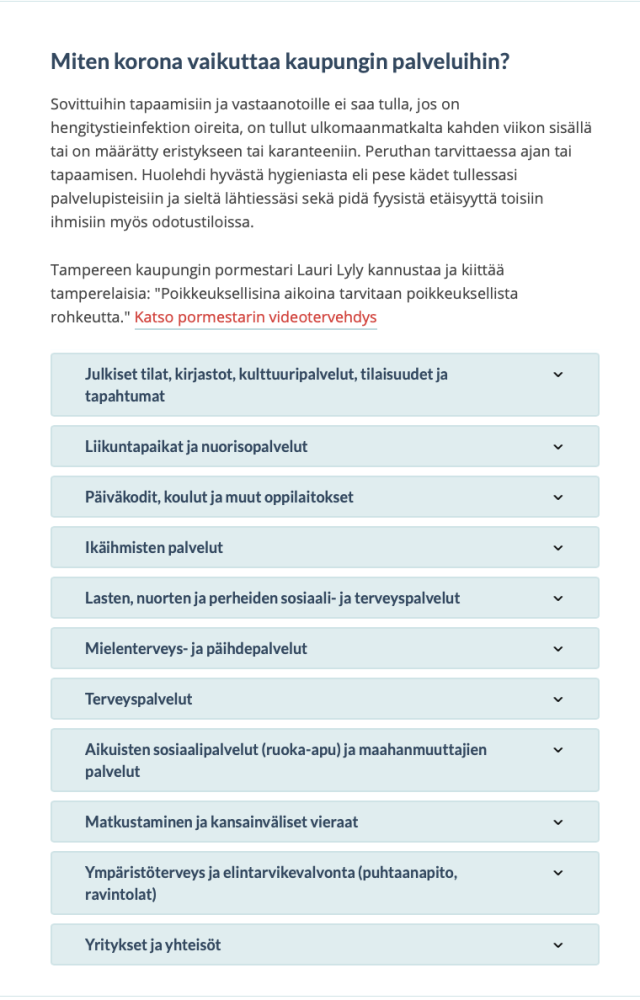
Figure 11. Hyperlinks on the Finnish page.
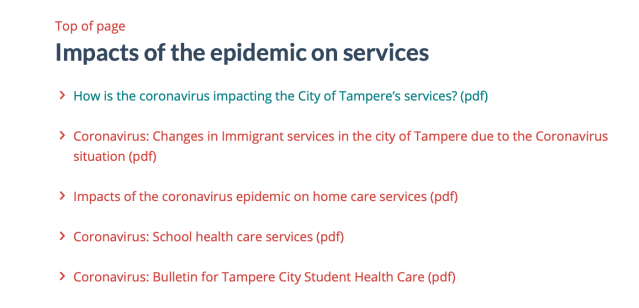
Figure 12. Links on the English page.
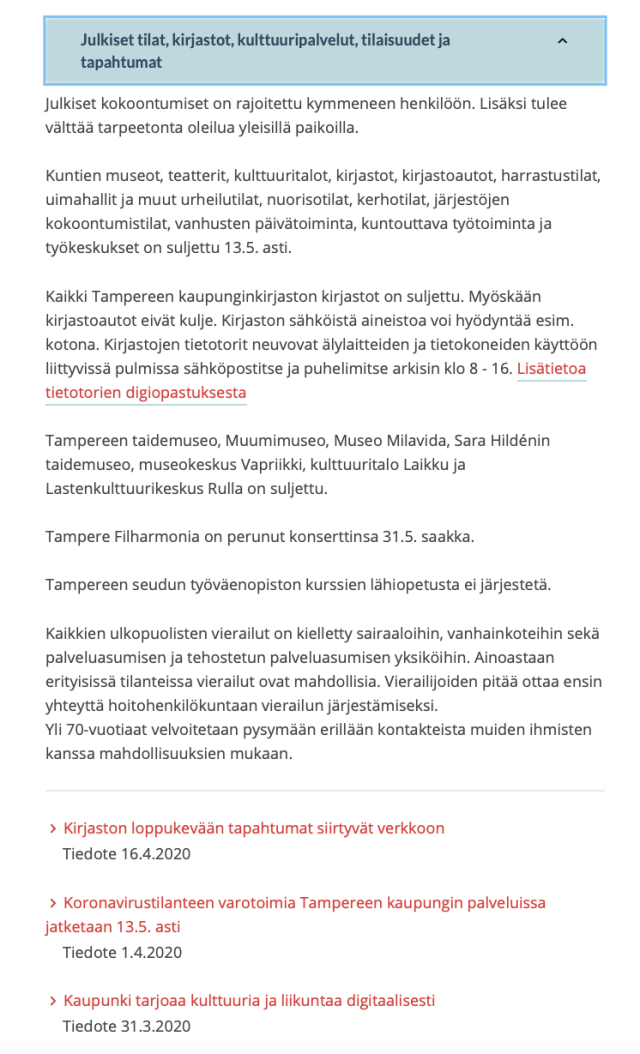
Figure 13. Information on the Finnish page.
At the end of the Finnish web page, the city of Tampere has placed information on how to get support for families and how to take care of welfare during the epidemic. A similar information does not exist in the English version at all. Other titles that only exist in the Finnish page are tips for benefitting from culture and sports from a distance, and instructions about coronavirus in the Finnish sign language. In addition, again in the end of the Finnish web page there are hyperlinks to information in different languages mentioned above. Both the Finnish and English web pages display the latest announcements in relation to the coronavirus. The number of announcements is, however, larger in Finnish than in English.
When comparing the information in Finnish and in English, the Finnish version has more information than the English one. Nevertheless, the city of Tampere has clearly invested in the instructions and information in foreign languages, especially in English. All the main information can be found in English on their own web page. For those who want to read more about the topic, they provide hyperlinks to the THL web pages. Even though there is more information in Finnish than in English, the city of Tampere has made sure that all the necessary information, in English and the other most common foreign languages, is there so that everyone is able to act in a safe way.
Helsinki
As the state’s capital, the City of Helsinki has an extensive website in Finnish, Swedish and English. In addition, some selected sections of the site are provided in German, French and Russian. As for the coronavirus information, the web page of Helsinki contains subpages in Finnish, Swedish and English, all of which use the same layout and template and provide almost identical information.
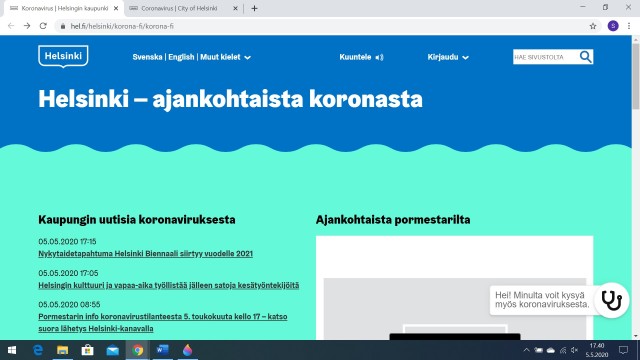
Figure 14. The Finnish main page.
The main page of the coronavirus information site is titled “Coronavirus updates from Helsinki” (in Finnish, “Helsinki – Ajankohtaista koronaviruksesta”). On the main page, there are several sections and hyperlinks to other sections and subpages. In the left-hand side column, the site offers “Latest news” with hyperlinks to news articles related to current issues. In the right-hand side column next to the news section, there is a video clip titled “Watch the 31 March Mayor’s info in English”, containing an information video by the Mayor of Helsinki Jan Vapaavuori that was released on March 31st, 2020 (see Figure 15). From the setting tools, one can add English captions (subtitles) to the video. This feature is convenient not only for those who wish to ensure they understand the mayor’s speech, but also for those who are, for example, hearing-impaired. A similar video section can also be found on the Finnish web page, although the video clip is different there: at the time of writing this, the Finnish page contained a more recent information video recorded on May 5th, 2020.
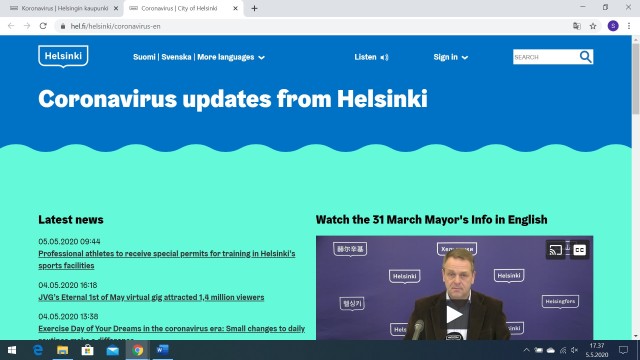
Figure 15. The English main page.
Further down on the English main page, there are six different sections with “Read more” hyperlinks that lead to information subpages on different topics: 1) Helplines and information, 2) Health care instructions, 3) Day care and school arrangements, 4) Cultural services move online, 5) Travel restrictions and transport, 6) Support for businesses (see Figure 16). These sections are identical with those on the Finnish web page. The bottom of the page offers a summary of contact information for the City of Helsinki, some key hyperlinks to coronavirus information pages and links to the City of Helsinki social media pages (Twitter and Facebook). These sections are identical on both the English and Finnish page.
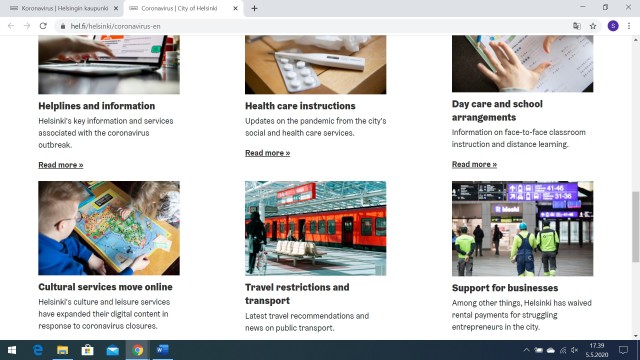
Figure 16. Subsections on the English web page.
In addition to multimodality through video clips, the web page has an inbuilt tool with which one can listen to the content of the page. When using the tool, all the text included on the page is read out loud in a clearly articulated manner. It is also possible to change the speed of the speech in case the reader talks too fast. The speech tool is provided in all the three main languages of the website (Finnish, Swedish and English). Like the English captions in the video clip, this tool serves as an additional aid to those who, for one reason or another, can’t read in English but understand spoken English to an extent. In addition, the speech tool is a useful instrument for people who are visually impaired.
In addition to the information on the coronavirus provided in Finnish, Swedish and English, the City of Helsinki offers information about the virus in fifteen other languages, many of which are commonly used by ethnic minorities living in the capital city area. These informative video clips and pdf files are not, however, easy to find, as one needs to click through several subpages in order to find them. Three videos about the coronavirus itself, provided by the City of Helsinki in association with the Finnish Institute for Health and Welfare (THL) and Helsinki University Hospital (HUS), are released in Somali, Russian and Arabic. There are also four videos in different languages on staying at home and hygiene issues, and four videos on new school and child care arrangements. In addition, the site contains pdf files on different topics, such as on how to act after the coronavirus test and instructions for quarantine, in several languages, including French, Estonian, Dari, Farsi and Turkish. Therefore, it could be argued that the City of Helsinki has taken its multicultural population into account when building the information site.
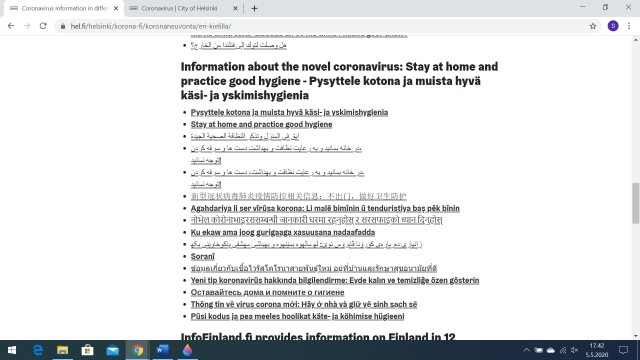
Figure 17. Pdf files in different languages.
Although at first glance the web pages seem to be identical in Finnish and English, there are some differences in the content of the page. Firstly, the “Latest news” section in Finnish contains more headlines than the English page, and some of the news pieces are only offered in Finnish, possibly because the content of the news pieces are not considered as important for the non-Finnish visitors of the web page (for example, news article on summer jobs provided by the City of Helsinki is not included on the English web page). In addition, the video clip on the main page of coronavirus information site is different in Finnish and in English. Another difference between the Finnish and the English web page is a chat box tool, which is provided on the Finnish version of the web page (see Figure 14, bottom of image).
As for the level of language used on the web page, the English used on the site is clear and professional, although perhaps somewhat difficult for someone who doesn’t have high proficiency in English. For example, many of the news articles written for the site are written in a quite formal register of English that may not be easy to understand is the reader’s English skills are on a basic level. Still, as the City of Helsinki provides information in minority languages as well, the English page on coronavirus serves its purpose. It is also worth noticing that the web page contains basically all the essential information about the virus and therefore there are not many hyperlinks leading to web pages of other institutes such as HUS or THL.
Conclusion
All of the cities investigated, Rovaniemi, Vaasa, Tampere, and Helsinki provide comprehensive information in English about the coronavirus. All of the cities also provide information on additional languages, such as Swedish, Arabic, Russian, etc. The information is mostly written in understandable and clear English, even though in some cases you do need a good proficiency in English. All the cities also provide some form of hyperlinks to other pages, such as the Finnish institute for health and welfare (THL), for more information on the subject. Overall, these cities take people with other native languages than Finnish into consideration well and provide the necessary information in other languages.
Sources:
https://international.rovaniemi.fi/en/News/Coronavirus
https://www.rovaniemi.fi/fi/Koronavirus
https://www.rovaniemi.fi/fi/Koronavirus/Toimi-nain-jos-epailet-koronavirustartuntaa
https://international.rovaniemi.fi/en/News/Coronavirus/Information-about-COVID-19-in-other-languages
https://www.who.int/emergencies/diseases/novel-coronavirus-2019/advice-for-public
https://www.vaasa.fi/en/living/health-and-wellbeing/about-coronavirus/
https://www.vaasa.fi/asu-ja-ela/terveys-ja-hyvinvointi/tietoa-koronaviruksesta/
https://www.tampere.fi/sosiaali-ja-terveyspalvelut/terveyspalvelut/koronavirus.html
https://www.tampere.fi/en/social-and-health-services/coronavirus.html#informationindifferentlanguages
Koronavirus: Helsingin kaupunki (https://www.hel.fi/helsinki/korona-fi/korona-fi)
Coronavirus: City of Helsinki (https://www.hel.fi/helsinki/coronavirus-en/)

Very good. I did find this very interesting reading! Thank you.
LikeLike